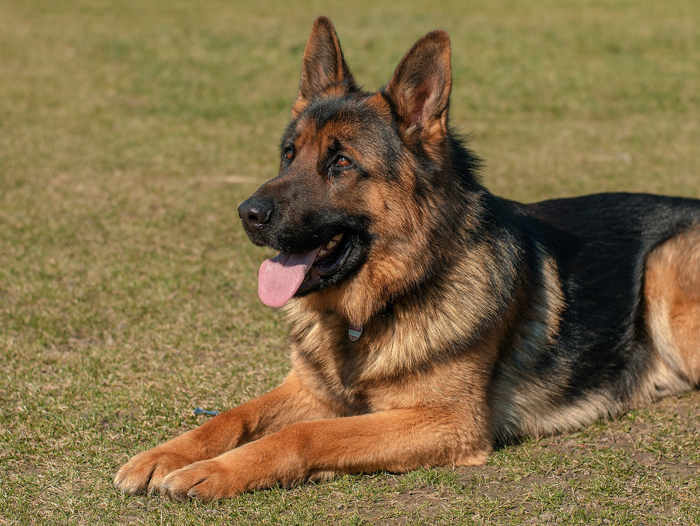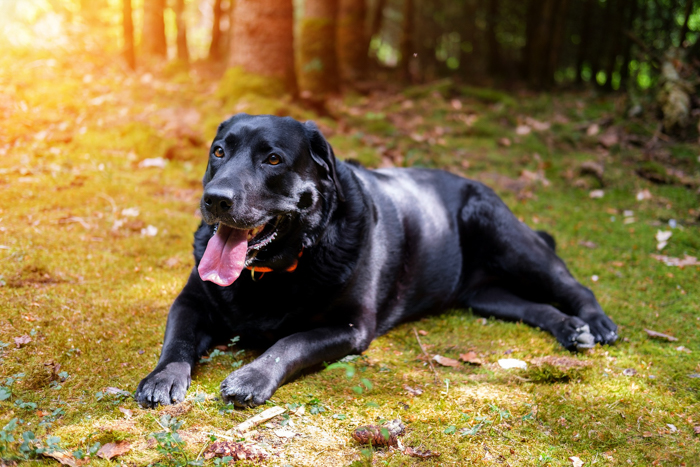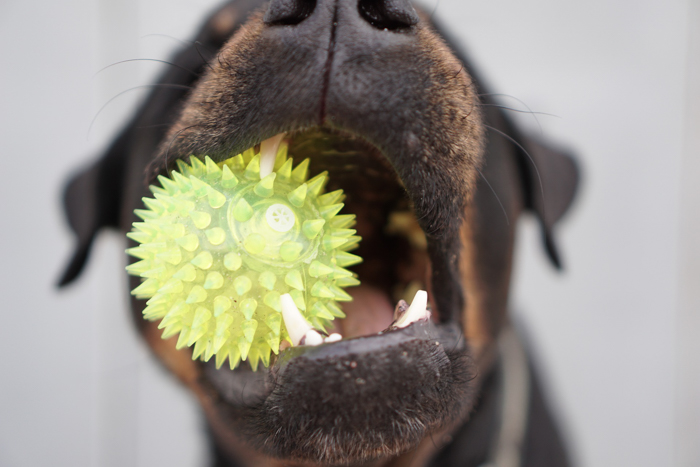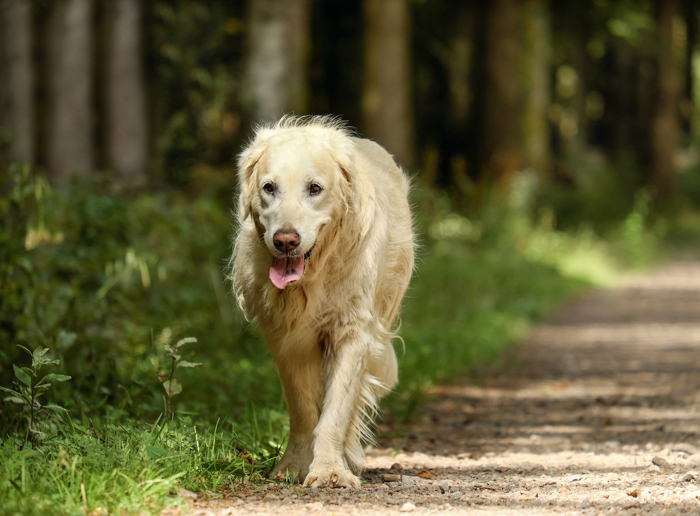
Everyone know dogs are awesome. But just how awesome are they? They make great guard dogs, loving companions, and you couldn’t ask for a better buddy to take to the park. But what you may not know is that dogs, as cute and fuzzy as they are, are actually much more complex that you’d imagine. Here are 25 awesome things you probably didn’t know about dogs.
Dogs have hotter internal temperatures than humans

Humans, being the warm-blooded creatures that we are, maintain a constant (if we’re lucky) internal body temperature of 98.6°F. Dogs, on the other hand, are much more warm-blooded with internal body temperatures ranging between 101 and 102.5 degrees Fahrenheit. However, just like with humans, a dog’s internal temperature can rise and drop for a variety of reasons like infection, with vaccinations or inflammation, etc.
Dogs have more than 18 muscles just for their ears

Can you wiggle your ears? If not, no big deal—it’s a useless ability. If you can, congratulations—that’s just about the only thing our six ear muscles are good for. Dogs, on the other hand, have around 18 muscles in their ears. This allows them to tilt and rotate their ears in a variety of positions to help better funnel sound into their inner ear. Their ear muscles also help to tune the position of their inner ear to help them hear better from far away.
Dogs don’t just lap up water all willy-nilly.

When dogs drink water, it looks like little more than just a tongue sloppily going into the bowl and water going all over the room. However, a dog’s tongue movements when it drinks are much more calculated. When a dog drinks water, they put their tongue in and curl it backwards, making a bowl of sorts with which to bring water into their mouths. This movement is repeated over and over at super fast speeds so it’s hard to tell they’re even doing it.
Dogs don’t sweat like we do

As humans, we know we can sweat almost all over our bodies. However, unlike humans, dogs can only produce sweat on the areas of their bodies that aren’t covered in fur—i.e., their noses and their paw pads. Because dogs can only “sweat” from two very small parts of their bodies, they need another, more efficient way to regulate their body temperatures. This is where panting comes in. When dogs pant, they are alleviating moisture from their tongues and lungs which helps to cool them off.
Dog noses are like fingerprints.

In much the same way as each individual human being can be identified by his or her unique fingerprint, dogs too can be differentiated by their nose marking. Just like our fingerprints are ours and no one else’s, each dog has a unique nose print pattern. Because of this, the Canadian Kennel Club has been using (since 1938 actually) dog nose prints as proof of identity over dog tags that can be lost or microchipping that not every dog owner utilizes.
Your dog is smarter than you think

While there are 192 officially registered dog breeds and some are definitely more intelligent than others, it’s believed that the average dog is about as smart as a 2-year-old human child, with the smarter breeds scoring an intelligence level closer to a 2.5-year-old. This conclusion is based on studies that test a dog’s language development, an arithmetic test, signal understanding, and spatial recognition. Dogs can learn about 165 words (the same as a 2-year-old) and even solve basic math problems.
Dogs can read your facial expressions

Any dog owner will tell you he or she believes their dog can read their facial expressions. Dogs act a certain way depending on if you’re smiling (with a tail wag perhaps?) or frowning (lowering their head maybe?). In tests using photographs of humans with a variety of facial expressions (some positive, some negative, and some neutral), it was proven that dogs react accordingly when shown different emotions. This type of social recognition is a learned skill that dogs, like babies and young children, pick up via their personal experiences with cause and effect.
Dogs can help lower your blood pressure

Several studies have shown that owning a dog can help lower your blood pressure. One aspect of this is the simple fact that dog owners get more exercise than non-dog owners through taking multiple daily walks, trips to park, etc. It’s also been proven that when a person pets a dog, his or her blood pressure goes down due to the calming effect of the interaction. This helps soften the blow that stress takes on the human body and explains the benefit of using dogs as emotional support animals.
Dogs have far fewer taste buds than humans

While humans have around 9,000 taste buds on our relatively small tongues, dogs on the other hand have only 1,700—far fewer than us humans. Therefore, their sense of taste is about just one-sixth as fine-tuned as ours. This may explain why they’re able to eat the same food every day of their lives without complaint. Despite having fewer taste buds than us, it has still been proven that dogs have the same four taste classifications as us—they’re able to distinguish salty, bitter, sour, and sweet.
But they have a way better sense of smell

Despite having a muted sense of taste, dogs actually have an incredible sense of smell—about 10,000 to 100,000 times as superior to humans. This is what makes them perfect for sniffing out bombs, drugs, corpses, hunted game, and so much more. One study done by Florida University made the analogy of scent being represented as vision. They said that something we would be able to see that’s just 1/3 of a mile away, a dog could still see perfectly from more than 3,000 miles away.
Dogs can sniff out diseases

One benefit of dogs having such an incredible sense of smell is that they’re even known to be able to sniff out certain diseases like cancer and diabetes using only their noses. Because of this, there are now diabetes alert dogs who can alert their owners when they sniff out chemical changes in their owners breath and sweat. Also, dogs are now being used to sniff out certain cancers like lung, breast, prostate, and bladder cancer because of the release of certain organic compounds.
Dogs sleep curled up in a ball for protective reasons

You’ll find that dogs can be found sleeping in a variety of positions—but one of the most common is curled up in a ball. This isn’t just because their dog bed is too small, it actually has roots in evolution. While sleeping curled up in a ball is definitely used as a way to maintain their high internal body temperature, it’s also for protective reasons. Dating back to your dog’s origins before they were domesticated, dogs would sleep this way to protect their vulnerable, vital organs from predators.
There is more than one reason a dog chases its tail

As funny as it may be, dogs don’t just chase their tails because they’re there. There are actually many reasons a dog may do this. For instance, one reason is boredom. The younger they are, they more they may view their tail as a toy to be played with. Another reason is to get attention, especially if the reaction he/she gets from you is positive. Another may be that something is wrong like worms or biting fleas or perhaps even a compulsive disorder. And lastly, some breeds—like German Shepherds and terriers—just chase their tail more than others.
A dog’s tail wag can signify more than one thing

Just like a dog chasing its tail can have more than one meaning, so does the dog that wags its tail. While most people believe a dog wags its tail because it’s happy and friendly, it can also signify other more serious things. While it can be used to signify what humans would interpret as a smile, it can also be used as a sort of emotional thermometer. Holding its tail horizontally means the dog is alert, holding it higher and higher means the dog is becoming increasingly threatened, and if the tail is vertical that can be interpreted as a signal of dominance.
Dogs dream the same way people do

You know what it looks like when dogs dream—they may shake, their legs twitch, or they may even growl or yip during the episode. But did you know dogs dreams just like humans? This means that since dogs have the same brain structure as humans, they also experience the same stages of brain activity observed in people. It’s also been suggested that dogs dream about common dog activities, the same way we dream about actual human actions.
Puppies are born deaf and blind.

As cute as it is watching newborn puppies scuttle around trying to find their mother, it’s actually because for the first few weeks of their tiny little lives they are functionally deaf and blind. When puppies (and kittens too actually) are born, both their eyes and ear canals are closed. This is a result of an evolutionary need for the species to develop more after being born so the mother can tuck them away in a den and continue to hunt prey. After about two weeks, the more fully developed ears and eyes open and begin functioning normally.
Dogs can actually see in color

Despite the long-held myth, dogs are, in fact, not color blind and don’t only see things in black, white, and shades of gray. Dogs have cones in their eyes just as humans do—cones being the color receiving cells inside the eye. However, they have fewer of these cones meaning while they can pick up colors, what they’re seeing is simply not as intense or vibrant as what we see. In its simplest explanation, dogs see the world in terms of various shades of blue, yellow, and gray.
They can see in the dark due to a special membrane

Dogs may not be able to see as many colors as we do, but they have eyes that help them when it counts whereas we don’t. Thanks to a special membrane in the dog’s eye called the tapetum, they’re able to see well in both dim and bright light, whereas humans do best in bright environments. The tapetum is found at the back of the dogs eyes and its purpose is to reflect light, essentially meaning the dog’s eye can pick up twice as much light. This membrane is also what causes a dogs eyes to glow in the dark.
Dalmation puppies are born all white

As you may remember from the Disney classic 101 Dalmations, dalmation puppies are actually born completely white, without any black spots at all. In fact, dalmation puppies are spot-less for about the first 3 to 4 weeks of their lives. However, though their fur is white, you’ll still be able to see black spots on the skin beneath the fur. After about a month they will have developed most of their spots, though some will still develop throughout their lives.
Chihuahuas are born with a soft spot

Just like human babies, Chihuahua puppies are born with a sensitive soft spot on their heads between their ears. This spot is known as a molera and its presence is due to the skull being slightly open at birth to encourage a safer trip through the birth canal. Over time, the molera will typically close up on its own but can sometimes remain for the rest of the dog’s life. In this case, reasonable care should be taken to ensure the dog doesn’t suffer any head injuries and, potentially, severe brain injury.
An adult dog has 42 teeth

After a human has grown all of his or her adult teeth, he or she will be left with only 32 (on average, not counting any wisdom teeth he or she may end up with). Dogs, however, will have a total of 42 permanent teeth at adulthood. As puppies, dogs will have only 28 baby teeth (while humans only typically have 20). Dogs begin to lose their puppy teeth between 3 and 4 months and, by the fourth month, most teeth will be gone with their adult counterparts already in place.
Dogs don’t like being hugged

Dogs make great companions and are even often referred to as “man’s best friend”, but it turns out dogs have a limit to how much love they can handle. Just because humans have adapted hugging as a way to express affection doesn’t mean dogs have adapted this also. To a dog, placing your arms over their’s is a sign of dominance, and one they aren’t completely comfortable with. Some dogs are able to understand your intentions, but others may view it as a threat.
Dogs can sense weather changes

It’s been long believed that dogs can sense changes in weather before humans can—they may start acting strangely, become more cuddly, or just seem overall uncomfortable and worrisome. Turns out, there may be some science to the old wives’ tale. It’s believe that since a dog’s sense of hearing is much more acute than humans, they may be able to hear thunder much farther away, or can smell approaching rain much more clearly with their intense sense of smell.
Dogs have a wide range of emotions

As previously mentioned, dogs’ brains have the same structure that human brains do—this indicates that dogs are able to experience a wider array of emotions than previously thought. Because a dog’s intelligent level is on par with a 2.5-year-old human’s, their emotional capabilities can be roughly equivalent. This means dogs can experience emotions like excitement, contentment, distress, fear, joy, anger, shyness, and affection, but not more advanced emotions like guilt, pride, and shame.
Dogs that are spayed or neutered have longer lifespans.

Spaying (for females) and neutering (for males) your dog is the best way to control the population of domestic animals. However, science suggests that it may have another benefit as well—this time for your dog. Research from the University of Georgia suggests, through an extensive study involving more than 40,000 dogs, that dogs that have been spayed or neutered lived longer lives on average. On the flip side, that same research shows that dogs that have been spayed or neutered are also more likely to die from cancer.

Comments
Loading…